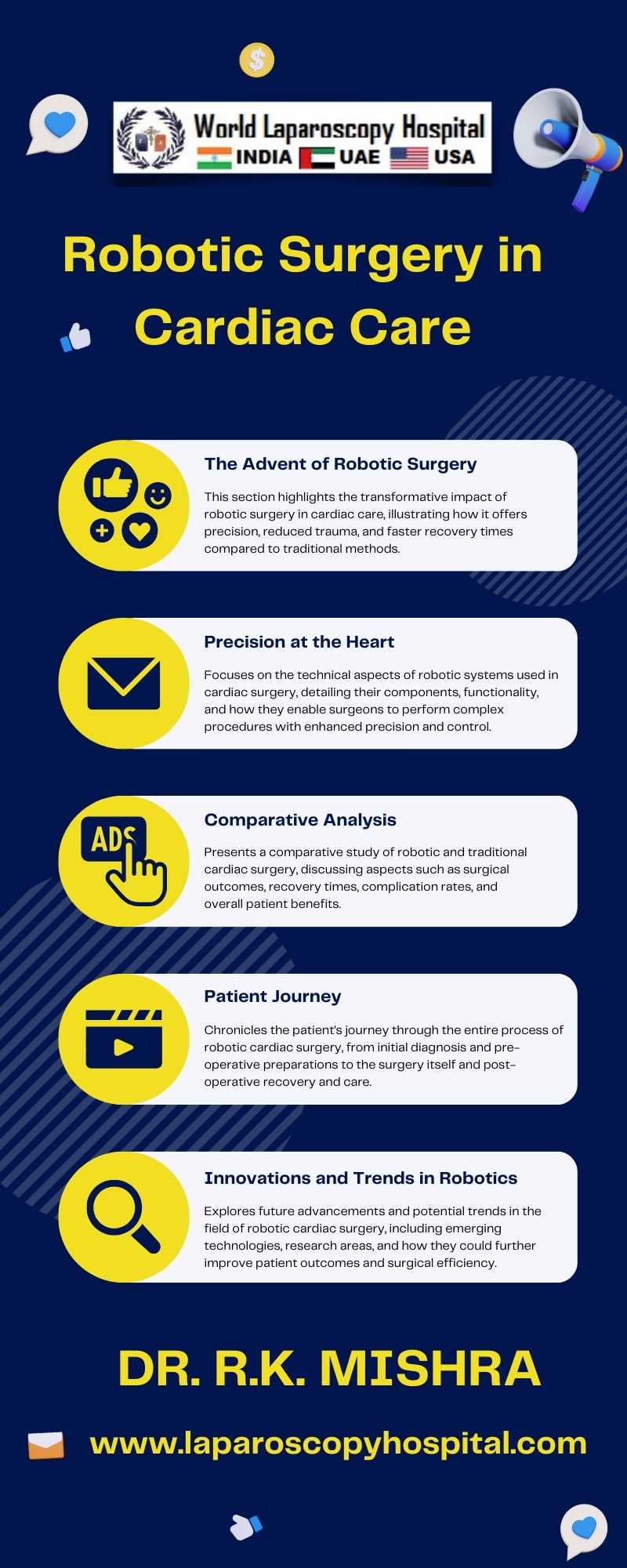The evolution of cardiac care has taken a significant leap with the advent of robotic surgery. This technological advancement stands as a testament to the continuous pursuit of enhancing surgical precision and patient outcomes in the field of cardiology. Robotic surgery, also known as robot-assisted surgery, allows for complex procedures to be performed with more precision, flexibility, and control than is possible with conventional techniques.

Historical Context and Development
The journey of robotic surgery began in the late 20th century, initially conceptualized to facilitate remote surgery during warfare or in remote areas. Its adoption in cardiac care, however, marked a new era. The precision of robotic arms, combined with advanced imaging techniques, has opened new horizons in treating heart diseases. The first robotic cardiac procedure was performed in the late 1990s, and since then, it has evolved with improved technology and wider acceptance.
Technical Aspects of Robotic Surgery
Robotic surgery in cardiac care primarily involves the use of the da Vinci Surgical System, the most widely used robotic surgical system. This system comprises a console where the surgeon sits to operate, a patient-side cart with robotic arms, and a high-definition 3D vision system. The surgeon controls the robotic arms which translate the surgeon's hand movements into smaller, more precise movements of tiny instruments inside the patient's body.
Advantages in Cardiac Care
The precision of robotic surgery provides numerous advantages in cardiac care. It enables minimally invasive procedures, reducing the size of incisions needed. This leads to less blood loss, lower risk of infection, and quicker recovery times. Procedures like mitral valve repair, coronary artery bypass, and tumor removal have seen improved outcomes with robotic assistance. The enhanced visualization and dexterity allow surgeons to perform complex procedures with greater accuracy.
Challenges and Limitations
Despite its advantages, robotic surgery faces certain challenges. The high cost of equipment and training can be a barrier to widespread adoption. There is also a steep learning curve for surgeons, requiring extensive training. Furthermore, robotic surgery is not suitable for all cardiac procedures and patients, with the decision depending on specific medical conditions and anatomical factors.
Future Prospects
The future of robotic surgery in cardiac care is promising, with ongoing research and development aimed at overcoming current limitations. Advances in artificial intelligence and machine learning could further enhance the precision and capabilities of robotic systems. Integration with other technologies like augmented reality could provide real-time data and imaging, aiding surgeons in complex procedures.
Conclusion
Robotic surgery represents a heartening development in cardiac care, offering a blend of technological innovation and medical expertise. While challenges exist, its potential to improve patient outcomes is undeniable. As technology continues to advance, robotic surgery is poised to become an integral part of cardiac care, revolutionizing the way heart diseases are treated and managed.